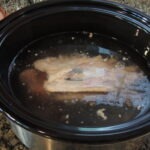If you don’t like peaches, perhaps you’ve never had one picked ripe, right off the tree. It’s summertime here in the south, and tree-ripened peaches can be found at almost every vendor’s stand. However, the peach actually originated in China, where it was known as the Tree of Life. We can understand that!
Peaches make a delicious and healthful snack, low in calories, high in fiber, packed with nutrients, and with a low glycemic load to boot! (That means they don’t spike your blood sugar levels too much.) Peaches provide good amounts of calcium, magnesium, phosphorus, vitamins A, C and K, carotenoids and many other important phytonutrients like lutein and zeaxanthin. What’s not to like?
At the farmers market, you’ll be able to taste and see all the different varieties:

The vendors will gladly help you pick out the right peaches, whether you want them ripe enough to use right away or not. But, do your due diligence as well. It’s a good idea to know what you’re looking for. You can find good peaches at grocery stores, but it’s not as easy. Often the peaches were picked too early and transported too far. That’s why you need to look for local peaches in your grocery store. If you live outside of peach country, we’re so sorry. You need to plan a trip to the south. Be sure to check out some of our peach recipes, like Grandma’s Best Fruit Cobbler Recipe or the modern variation, Peach Batter Cobbler with Ginger. Want something healthier? How about an Almond Peach Smoothie?
HOW TO PICK PEACHES:
- Observe the color of the skin, especially around the stem end. There should be no greenish tinge. Yellow peaches should have a golden tint (under any reddish blush). White peaches should have a creamy tint. Avoid peaches with bruises, scratches and mold.
- Smell the peach. Ripe peaches should have a rich, peachy smell. If not, they are probably not ripe, although some varieties are more fragrant than others.
- Touch the peach. Give it a gentle little squeeze. If it feels like a rock, forget it! It was probably picked way too early. If there’s a slight give, you know the peach has at least a few days before ripening. If there’s more give, the peach is ready to eat or use that day or the next. If it’s mushy, it’s too late and will be almost impossible to peel. However, if you can buy an end-of-the-season bushel of very soft peaches for almost nothing and don’t mind the work, they’ll make great jams or sliced, frozen peaches for use in ice cream or smoothies.
HOW TO RIPEN PEACHES:
If you end up with some not-so-ripe peaches and decide you want to eat them quickly, you can help the ripening process along.
- Place the peaches stem-side down, in a brown paper bag that allows for a little room between each peach. We lay the bag on its side.

- Close the bag and leave on the counter for 1-2 days:
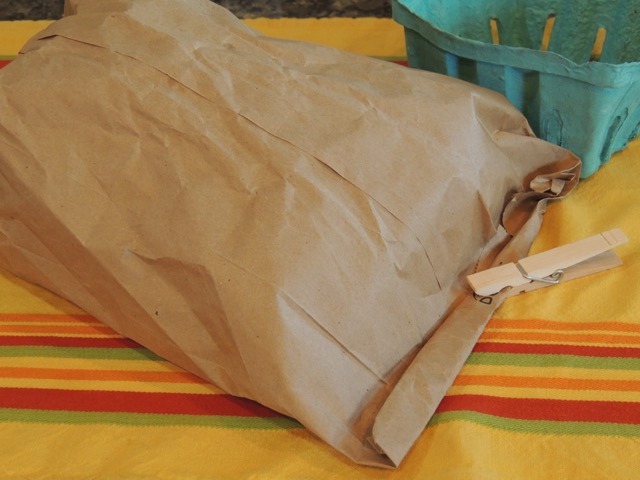
- Remove peaches from bag and check them out. That’s all there is to it!
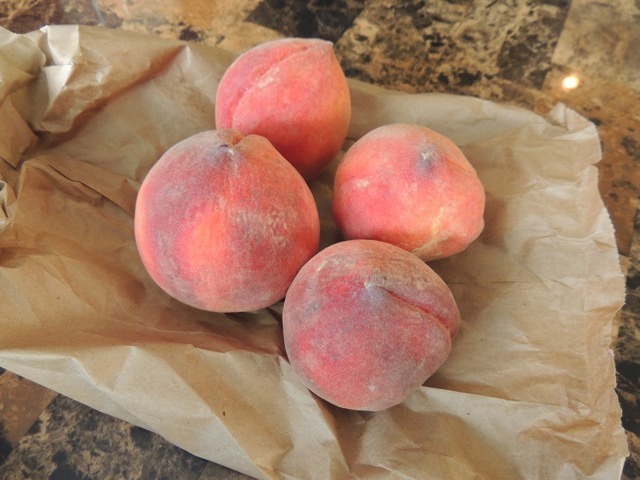
HOW TO CUT A PEACH:
There are several techniques, but we’ll demonstrate our favorite. First, it’s important to note that there are two main types of peaches: cling and freestone. They look the same from the outside, but are quite different when you cut them. Cling peaches come out early in the season. The flesh clings to the pit (aka stone). Later, the freestone varieties are available, which causes everyone to celebrate! The flesh easily releases from the pit, making them an easier choice for slicing. We usually wait for the freestones for cooking, and that’s the type of peach we have used in our demonstration. (Both types are equally delicious!)
- First, peel the peaches using a peeler if they’re firm enough, and a paring knife if they’re very soft. (You don’t have to peel the peaches, but since most peaches are grown with pesticides, we usually remove the skin, unless it’s an organic peach.)
- Hold the peach in one hand and start slicing through the peach to cut wedges:
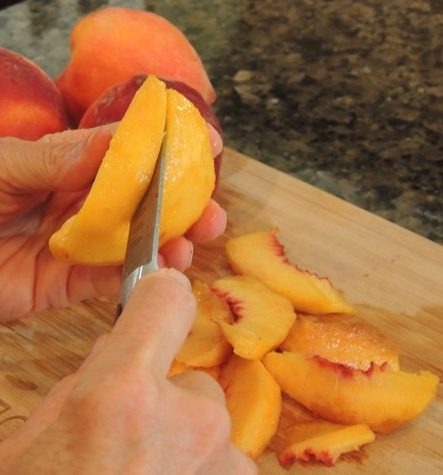
- As long as you’re cutting freestone peaches, the slice will easily release from the pit.
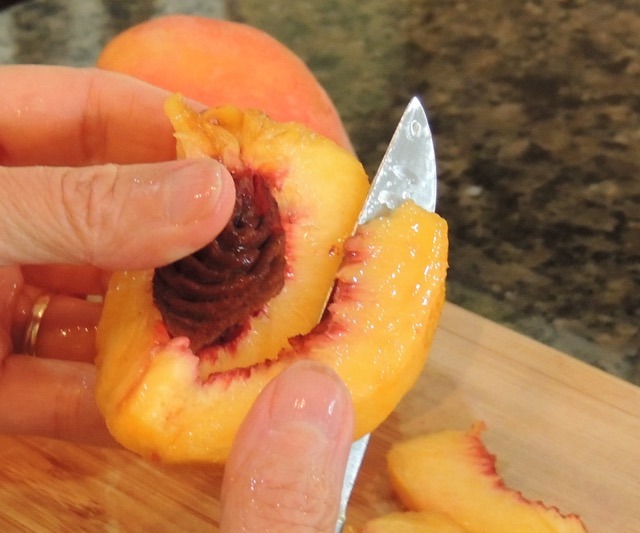
- Alternatively, cut the peach in half and separate by simply pulling the halves apart. Then, you can turn each half cut side down and slice or chop.
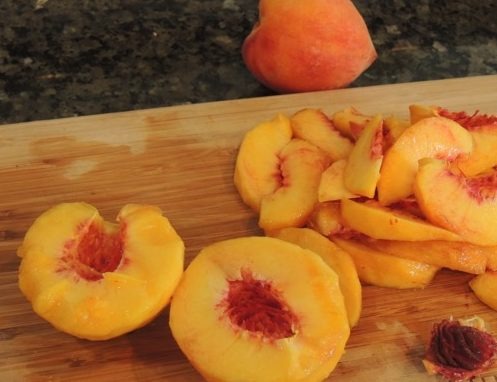
NOTE: With cling peaches, you need to cut around the pit to release the flesh.
Eat your peaches as-is, or make a lovely, syrupy peach concoction to serve with cream, ice cream, cookies or cake, by adding a little sugar.
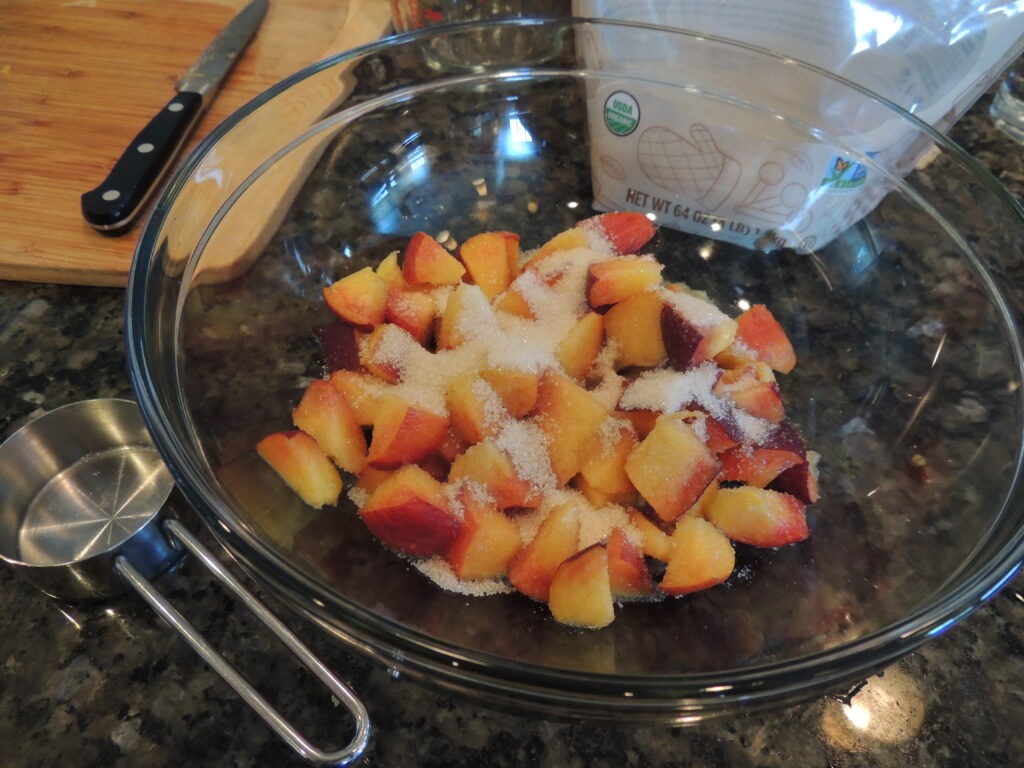
Here, have a peach!


